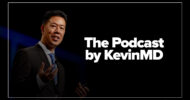Subscribe to The Podcast by KevinMD. Watch on YouTube. Catch up on old episodes!
Shane Tenny discusses his article, “Navigating your 457 plan: key steps for physicians changing jobs.” He provides crucial advice for physicians, particularly those with non-governmental 457(b) plans, on how to manage these retirement savings vehicles during a career transition. Shane clarifies that a 457(b) is a type of deferred compensation plan offered by state and local governments and certain tax-exempt organizations, differing in key ways from 401(k)s. For physicians leaving employers with non-governmental 457(b)s, he highlights critical considerations such as the likelihood of mandatory distribution upon separation, the general inability to roll these funds into an IRA or another qualified plan (a common option for 401(k)s and governmental 457(b)s), and the potential for the entire plan balance to become taxable income in the year of distribution. Shane outlines actionable steps for physicians, including thoroughly reviewing their specific plan documents, engaging in strategic tax planning, exploring possibilities for scheduled distributions to spread out tax impacts if the plan allows, and assessing the retirement benefits offered by their new employer. He also notes unique features of 457(b) plans, such as the absence of a 10 percent penalty for withdrawals before age 59 ½ and a special catch-up contribution provision for employees in the three years preceding their normal retirement age.
Our presenting sponsor is Microsoft Dragon Copilot.
Want to streamline your clinical documentation and take advantage of customizations that put you in control? What about the ability to surface information right at the point of care or automate tasks with just a click? Now, you can.
Microsoft Dragon Copilot, your AI assistant for clinical workflow, is transforming how clinicians work. Offering an extensible AI workspace and a single, integrated platform, Dragon Copilot can help you unlock new levels of efficiency. Plus, it’s backed by a proven track record and decades of clinical expertise and it’s part of Microsoft Cloud for Healthcare–and it’s built on a foundation of trust.
Ease your administrative burdens and stay focused on what matters most with Dragon Copilot, your AI assistant for clinical workflow.
VISIT SPONSOR → https://aka.ms/kevinmd
SUBSCRIBE TO THE PODCAST → https://www.kevinmd.com/podcast
RECOMMENDED BY KEVINMD → https://www.kevinmd.com/recommended
Transcript
Kevin Pho: Hi, and welcome to the show. Subscribe at KevinMD.com/podcast. Today we welcome back Shane Tenny. He’s a certified financial planner. Today’s KevinMD article is “Navigating your 457 plan, key steps for physicians changing jobs.” Shane, welcome back to the show.
Shane Tenny: Thanks, Kevin. Glad to be here.
Kevin Pho: All right, so tell us what led you to write this article and then the article itself for those who didn’t get a chance to read it.
Shane Tenny: For sure. Yeah, 457 plans. We wrote the article because they’re a source of confusion. They look and feel a lot like things we’re familiar with: 401k plans. But they have very different rules, and so that can really be a snare for some physicians.
When they work for an employer, they have something that looks familiar, but then later, especially when they get ready to leave, retire, or move to another job, they realize, “Oh, this works differently.” So we want to help clear up some of the confusion.
Kevin Pho: All right. Excellent. So tell us about the article. Maybe start with some definitions for those who are not familiar with the 457 plans in contrast to 401k plans.
Shane Tenny: Oh, for sure. Yeah, a lot of definitions are useful in here. So, I’ll give a little story. First of all, about a decade ago, we had a client that worked in Cincinnati at a big hospital system there. He went to take a new position in another state. And he had been participating in the 457 plan there and the 401k. And as you point out, I’ll define both of these in just a minute. So moving to the new company, a private practice, he thought, “Oh, I’ll roll over my 401k; I’ll roll over the 457.” And that’s when he learned that all those years of deferrals that he had been making weren’t eligible to be rolled over to an IRA, like 401k accounts can be. So why is that?
Well, let me take a minute and just define what we’re talking about here. As we all know, most of our listeners, most of our docs, are familiar with 401k plans. Whether you’re in private practice, whether you’re hospital-based, a 401k plan allows you to save for retirement. In 2025, the deferral limit is $23,500 for participants under the age of 50. If you’re over that, you can put in a little extra money, and usually, your employer will give you some matching dollars. And again, familiar territory here: when you leave, most folks are familiar that you can either leave your 401k with the old employer, you can transfer it to the new employer, or you can transfer it to an IRA. Those are generally the three most common options.
457 plans look and feel a lot like a 401k, but number one, they’re only offered by certain employers, and that certain employer is two groups of companies that often affect physicians. 457 plans can be offered by governmental institutions. They can be offered by nonprofit institutions. They cannot be offered by for-profit entities. So let’s think about our medical universe here. If you’re working for a for-profit hospital system, such as an HCA, or you’re in private practice, then you’re not even going to have access to a 457.
However, if you’re working for a hospital system that’s a nonprofit, you very well may have access to this. And what’s often confusing is whether your hospital is only a nonprofit or if they’re actually sponsored by the state or a municipality through a certificate of need or something like that. And so that’s where we get into some differences. If you have access to a 457 because you’re working for a hospital system, then it’s really important to understand whether the system you’re a part of is simply a nonprofit or if they’re governmental-based. That’s where the difference lies.
But overall, while you’re working there, the contribution limits are the same as a 401k. The catch-ups exist; you can put in extra money even after you’re 60. So it looks and feels a lot like a 401k, and in principle, the 457 is really referred to as a supplemental retirement savings plan that allows high-income-earning employees to save more than just the 401k. I’ll pause there in case you have any questions, but we can keep going and talk about the differences.
Kevin Pho: So I think from the consumer or the physician standpoint, it looks and acts about the same. You have a menu of investment options, but it sounds like whenever a physician leaves their employer and their options in terms of what to do with that money, that’s where it differs significantly from a 401k.
Shane Tenny: It sure does. And you want to be aware of that both from a control standpoint and a taxation standpoint. So, let’s dive into that a little bit. 457 plans that are offered by governmental entities—so again, think your municipality-sponsored hospital system—when you leave, you have the same options that you have with a 401k. So, a governmental-sponsored 457, you can roll to an IRA; you can consolidate it with your other retirement accounts, kind of keep life simple. That’s usually the option that most people choose.
It’s those docs that work for nonprofit hospital systems that are not governmental; they’re just a nonprofit. The money they’ve deferred into that 457 falls onto the rules of deferred compensation. And what that means is that that hospital system, when they set up the plan, they had to adopt the rules they want to have in place for the plan. And those rules, number one, do not—they cannot—allow a rollover to an IRA. And so, when you’re leaving there and you’re thinking, “Oh, I’m going to roll this to an IRA and avoid taxes,” that’s not an option. What is an option? Well, whatever the hospital has adopted in their plan, and usually that will involve either taking a mandatory lump sum distribution or a distribution according to their schedule, which might be a distribution when you reach 65, even though you’re not working there anymore, or a distribution at intervals—maybe one-tenth of your account every year for 10 years—or deferring all of it and it all gets kicked out to you after 10 years.
I mentioned a minute ago the client that we have from a number of years ago that left the group in Cincinnati. The two choices that were afforded to him were: either just leave the money there ’til you’re 65, which was 20 years or something in the future (that didn’t seem great), or we’ll send it all to you in 10 years. So in his case, he just had to leave it there, track the statements, and pay attention to the investments, those sorts of things. And then in the year when it was going to be kicked out, there’s no choice to not receive it. We just had to plan in advance for this influx of additional taxable income and have a plan for how to handle that.
Now, an important nuance here that some folks are going to be picking up on is, “Wait, if I’m in my forties or fifties and I get this 457 being mandatorily paid out to me ’cause I leave, isn’t that going to be a penalty or something like that?” And that is a beneficial thing to know: 457 plans with a mandatory distribution are not subject to the premature withdrawal penalty like 401ks and IRAs are. So you do have to pay income taxes; you don’t have to pay a 10 percent penalty.
Kevin Pho: What’s the most common scenario in terms of payout that you see from these 457(b) plans in case a physician wants to leave a non-governmental nonprofit? What are some of the most common scenarios that you see?
Shane Tenny: Most common is lump sum at termination or lump sum at retirement. That’s the most common. But I wouldn’t say that’s 90 percent of these. There’s a fair amount of fluctuation in the middle. As I alluded to, sometimes we’ll see installment payouts over five or 10 years, or a lump sum.
Kevin Pho: So let’s go back to that scenario where the physician, say, was in their forties and they were changing jobs, and they had the option of a lump sum when they were 40. So does that simply just become taxable income so they lose the benefit of future tax deferrals that’s typically offered in retirement accounts?
Shane Tenny: Absolutely. It’s all a lump sum income in that year on top of whatever else they’ve earned, so it’s going to be taxed at the marginal bracket for them. But to your point, on the downside, you lose the tax deferral; on the upside, you gain full control. Now, the money, net of taxes, is available to you to use for whatever you want: either put it in your regular investment portfolio, use it to pay for your house, kids, whatever the case is, lifestyle things.
Kevin Pho: So for physicians who find themselves in this scenario—and maybe you could give physicians at different points of their career confronted with this decision—tell us the type of questions that you, as a tax advisor, ask these physicians to think about when considering their options.
Shane Tenny: Yeah, the things that you want to be aware of, number one, before you separate from service—when you put in your notice or you’re making the plans—is to look and understand what the distribution options are. And if you’re trying to do this on the sly, you can usually call up whoever the provider is of the plan and just ask them, “What are the distribution rules around our 457?”
Again, the employee, the physician, isn’t going to have a lot of control over what those rules are, but then it’ll be important to work with your accountant or your financial planner to plan ahead. Perhaps there are some things that might be available to you in your personal situation that might be conducive to offsetting that tax liability—say, maybe a year of enhanced charitable contribution or something like that to help offset it. In other cases, there won’t be anything reasonable to offset the additional income, but you just want to plan for it. As I say, “What’s worse than owing taxes is being surprised by owing taxes.” So at least we can plan ahead and either elect some withholding when they send us the check or set it aside so that we can accommodate it.
Kevin Pho: And then sometimes, leaving it in that employer’s 457(b) plan until a distribution at age 65, sometimes that in itself may be the best option, right?
Shane Tenny: It absolutely could be. Again, to your point, it probably depends a lot on whether you’re 41 or 61 at the time: how long are we deferring it, what’s your relationship with that firm, those sorts of things. But yeah, leaving it there may be an option if they don’t force a mandatory distribution.
Kevin Pho: How common are 457(b) plans for nonprofits? Do most of them have 457(b)s? Or do some non-governmental nonprofits have 401ks? So what’s the distribution like?
Shane Tenny: I would say, just anecdotally in my experience, most governmental-based hospital systems and most nonprofit hospital systems do offer them. They are an effective way to allow high-income-earning employees—physicians, executives, et cetera, of that system—to save at a rate that’s more commensurate with their income level. So they are fairly common within that universe.
And as I said earlier, there are not only the distribution nuances, but it might be worth just drilling in on a little bit that, like 401ks, as most folks know, when you cross the age of 50, you’re entitled to an extra deferral or what’s called a catch-up contribution. In 2025, that catch-up contribution is $7,500 extra. So if you’re 50 or older by the end of the calendar year, you could effectively put in $23,500 plus $7,500. The 457 does, in fact, have a pretty unique catch-up contribution for the three years prior to retirement as defined by the plan. So it’s not your retirement; it’s the plan. So you may be thinking, “I want to retire at 60,” but if the plan defines retirement as 65 (which is usually the case), then for the three years prior to that—63, 64, 65—in the 457 plans, not 401k, right now the catch-up contribution is double. So instead of $23,500, we could be putting in $47,000 just to the 457 plan.
And Kevin, in case it’s confusing to anyone else, or I haven’t made it confusing enough, it is important to know that 457 plans are in every case offered in addition to a 401k, not instead of.
Kevin Pho: Did I hear you correctly that employers offer 457s in addition to 401ks? It’s not either/or, is that correct? So are you saying that employees get to choose between one versus the other?
Shane Tenny: You can often choose one or the other, or both. And so that is, in fact, the option. So if we think about a hospital system or your private practice, with a 401k, everybody can put in as much as the plan will allow to the 401k: $23,500. What’s unique is that within a hospital system that also offers the 457, your physician making $300,000, $400,000, $500,000, $600,000, $700,000 can do the $23,500 to the 401k and an extra $23,500 to the 457, plus whatever catch-up contribution. So the deferrals can get fairly large, and ultimately, they’re more in line with the income level of the highly compensated employee. And that’s why they’re provided: they create a competitive benefits option and a competitive retirement plan savings option for the highly compensated employees.
Kevin Pho: We’re down to Shane Tenny. He’s a certified financial planner. Today’s KevinMD article is “Navigating your 457 plan, key steps for physicians changing jobs.” Shane, as always, let’s end with some take-home messages you want to leave with the KevinMD audience.
Shane Tenny: Sure. I think we’ve hammered home the first one, which is: if you have a 457 plan, check the distribution options before you leave. And then the second thing that I’ll just hit really for the first time is a follow-up to the question you just asked. If you have a 401k and a 457 plan, one of the strategies you want to explore with your accountant or your financial planner is contributing to one of the plans on a pre-tax basis to help save you income taxes today, but perhaps saving to the other plan on a Roth basis to build tax-free money for the future. So in that way, you’re straddling both strategies that a lot of people often have questions and decision fatigue about.
Kevin Pho: Shane, as always, thank you so much for sharing your perspective and insight, and thanks again for coming back on the show.
Shane Tenny: Thanks, Kevin.





















![Why being your own financial planner is costing you millions [PODCAST]](https://kevinmd.com/wp-content/uploads/Design-1-190x100.jpg)





